Mark Sullivan works quietly at his bench, producing the heart of many bespoke gun-building projects. An actioner by trade, he used to work at Holland & Holland. Now, he works for the wider trade, happy to let someone else put their name to his work while he remains quietly anonymous to ninety-nine percent of the shooting public.
Mark has little personal interest in guns or gun-talk, he doesn’t shoot. Actioning guns is his job. When he puts his tools down, he leaves the job in the workshop. You won’t find him on social media opining about hot topics or showing off his work. However, if you want to build a best quality bespoke shotgun, Mark Sullivan is your man and the Holland & Holland ‘Royal’ is the action he will make for you, like he has for me, for William Evans, for William & Son, Westley Richards and numerous others over the years.
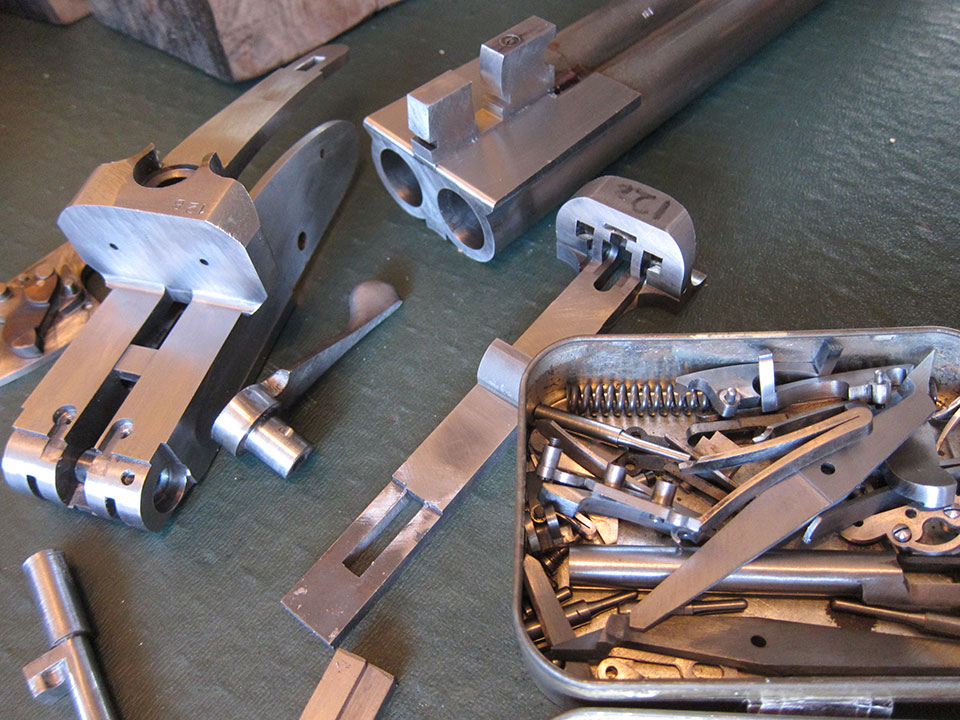
Of course, ‘Royal’ is a trademark. Holland & Holland began using the term to describe their best side-lock in the early 1880s. It does not designate a mechanism, more a reference to the highest quality offered by the firm.
Three hammerless guns have carried the ‘Royal’ badge of honour (not including double rifles). The first model with dipped-edge lock plates was designed by John Robertson (later proprietor of Boss), it was replaced in the 1890s with a second model, more conventional looking with smooth bar-locks and stocked to the fences in what became known as the ‘London pattern’.
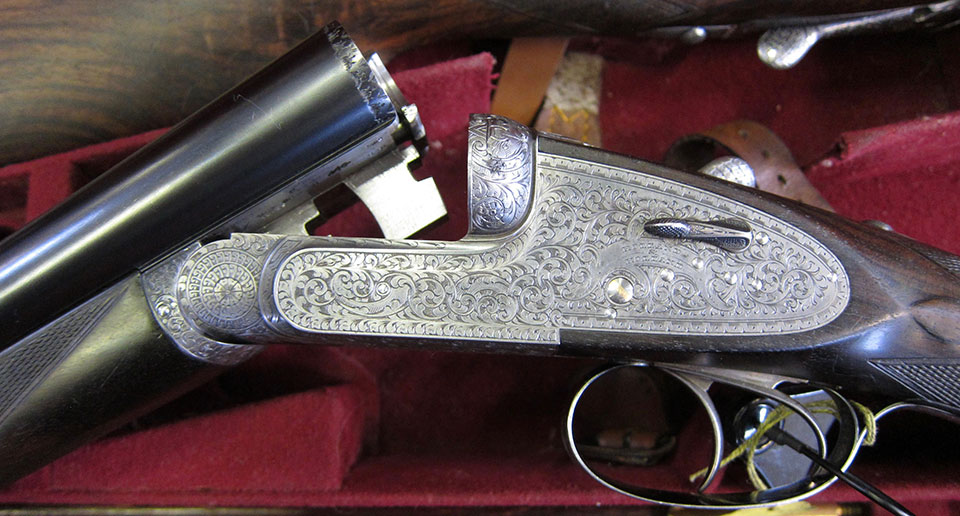
This, in turn, was surpassed by the addition of the 1922 patent assisted-opening mechanism, powered by a coil spring under the forend. That system has endured to this day and is the modern ‘Royal’. Of course, Holland & Holland have always built the ‘Royal’ to be ‘best’ quality. Lesser grade iterations of the same gun were generally badged ‘Badminton’.
What is it that appeals to the wider trade that is embodied in the Holland & Holland? In a word, efficiency. Unlike many other ingenious mechanisms produced by British gunmakers over the years, the Holland & Holland is very simple. Simple is good. Consider the Anson & Deeley; the parts are few, the parts are robust and the connections between parts are direct.
Early ‘Royals’ had an overly-clever cocking mechanism; one lock cocked on opening, the other on closing. That was quickly done away with and conventional cocking dogs employed, which use the weight and momentum of the falling barrels to cock both locks. It is a simple lever system, that sets the sears in the bents when the breech opens, and the gun is ready to fire as soon as it is closed.
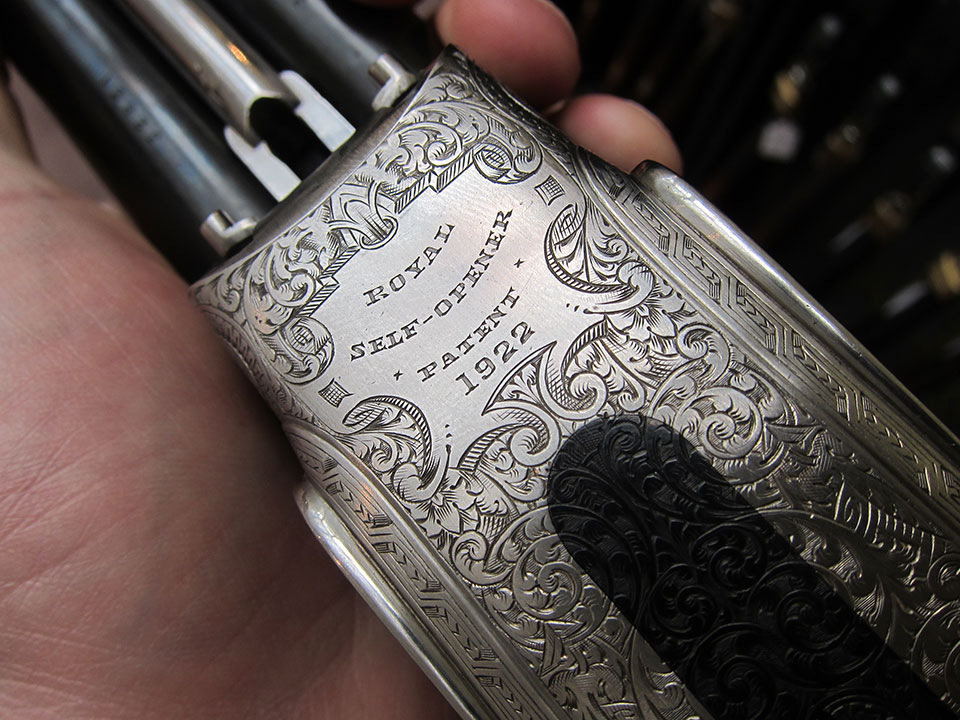
The ejector system is the best yet devised. Sometimes called the ‘Southgate’, it was referred to at Holland & Holland as the ‘Holland A-B’ ejector. It is difficult, in fact, to reliably attribute the design to one particular patent. In essence it works on the over-centre principle, like the spring-backed pocket knife. A spring puts tension on a limb, which hinges on a pivot and when it goes over centre, it thrusts the extractor up and throws out the spent case.
The locks are conventional side-locks, really just like a bar-action hammer gun with the hammers on the inside. The addition of an intercepting safety sear elevated it to fit the safety expectations of a best side-lock.
The self-opening system is a simple coil spring under the forend iron, which provides the tension required to push the breech open when the top-lever is turned.
The Holland & Holland system of production involves a whole team of men working on each gun, one completing a job and putting it down, followed by another specialist doing the next task, then going on to another, and so on. The system suits the style of the gun and the two complement one another. This system can be replicated in factories overseas when large numbers of guns are being produced.
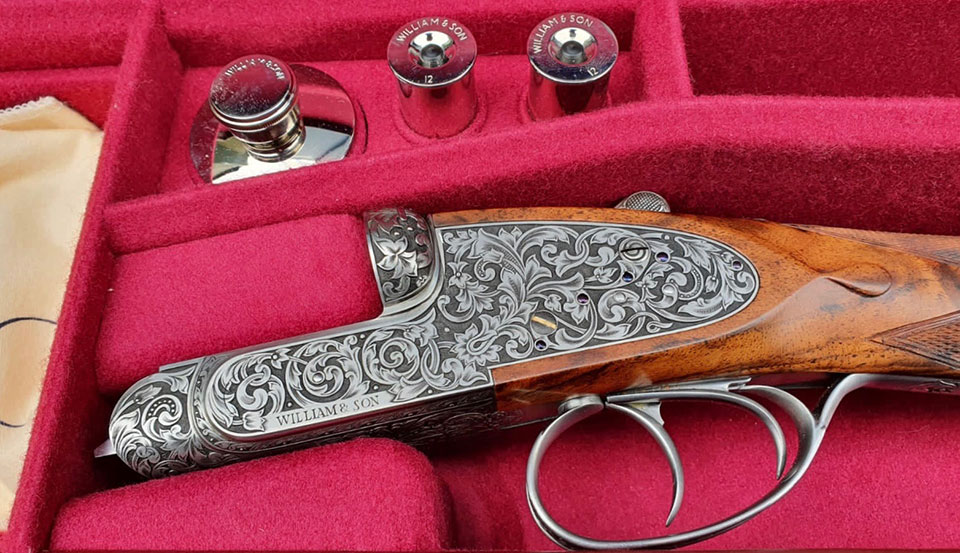
On top of simplicity and reliability, the gun looks good. It met the early twentieth century ideal of a stocked-to-the fences, London pattern bar action side-lock ejector, which has stayed the course and become the classic silhouette of elegance and style that sportsmen aspire to own.
The ‘Royal’ inspired many other firms to make their own version of it. To call these ‘Holland & Holland ‘Royal’ copies is often being too kind. If Holland & Holland reserve the name ‘Royal’ for their best guns, then anything made on the same principle but to a lesser quality is not a copy of a ‘Royal’.
Many emerging industries take a good product and make cheap versions of it abroad in order to sell it for less to customers who want that product but can’t, or won’t, pay the price it commands. So it was with AYA in the 1950s. Gunmakers in Eibar were tasked with copying a Holland & Holland. The idea was to make a cheap version and offer it to British sportsmen at prices that rivalled the Webley & Scott boxlock ejector: a side-lock for boxlock money.
The mis-placed snob value that a cheap side-lock was a superior weapon to an equivalent boxlock aided sales and legions of Brits (and Americans) bought these ersatz Holland & Hollands. To be fair, the AYA No.2 has always been a steady, nice-handling gun and has remained popular. You can today buy a very good thirty-year-old example for under £1,000.
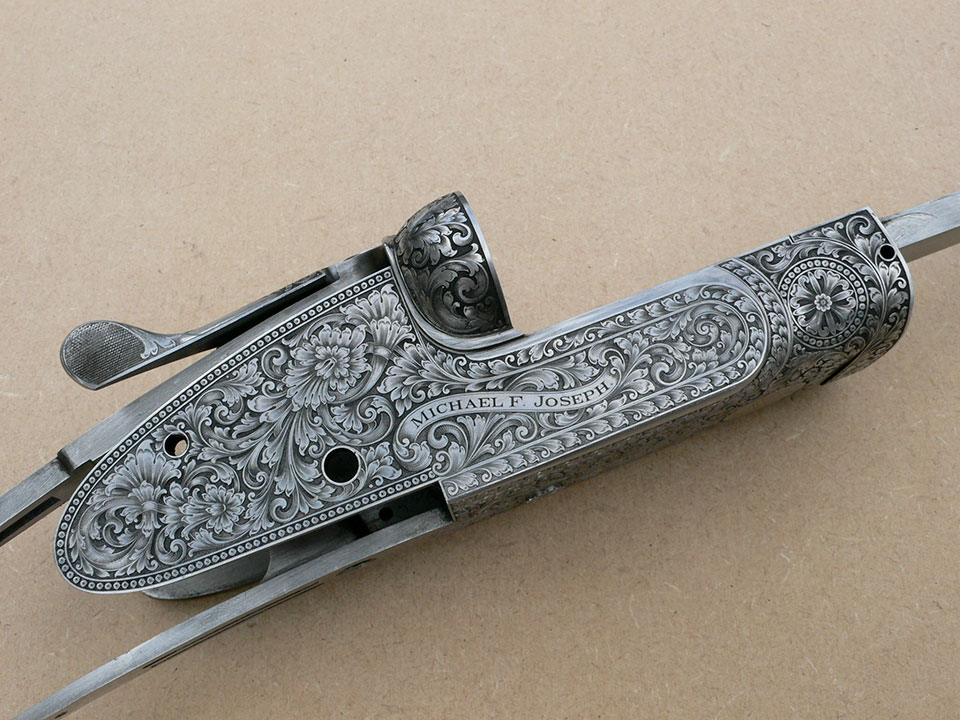
Today, Grulla sells a ‘Holland & Holland Patent’ side-lock, with assisted-opening and conventional variations, depending on the price point of the model. AYA offers a No.1 and a No.2 model based on the Holland & Holland, as well as upgraded ‘de-luxe’ versions of these.
The hand detachable locks, which, for many, are a distinguishing feature of a Holland & Holland ‘Royal’ have always been optional. John Taylor, the elephant hunter, liked the idea and wrote that the ability to remove, inspect and clean the locks in the field without tools was very useful and confidence inspiring, when he had to go in search of dangerous game the next day and wanted to be absolutely sure his locks were in perfect order.
For the British game shooter, I’m not sure they are much help. They encourage the curious fiddler to mess about beyond his level of competence. When employed on copies by Spanish makers, which lack the precision and quality of the British original, the pins are given to working loose. This often results in a lock falling out into the dirt.
I have had Guns ask me to put their locks back together on a shoot day, and I have had customers come to me with a gun missing one lock and ask for a replacement. One memorable call came from a chap who had found a ‘Royal’, when clearing out a dead relative’s house. He lamented the problem of the gun having been stored in one place and the locks cleverly hidden elsewhere, for security reasons. Nobody ever found out where! Short of a successful seance, the only (eye-wateringly expensive) option was to return the gun to the maker to have new locks made and fitted.
The Holland & Holland does everything it is supposed to do with utmost efficiency and continues to do it reliably for decades. Equally importantly, when it does go out of order, it is easy to fix because it is easy to understand and the parts are well proportioned and simply inter-connected.
Its enduring and widespread popularity makes a strong case for the proposition that this is the best, most practical, formula on which to build a side-lock shotgun yet devised.
Today, Holland & Holland, like most other gun makers, produce their ‘Royal’ guns from a set of parts made by CNC and spark-erosion machinery. The time required for actioning a gun there now is around half of the 290 hours it takes to do the job working from forgings, in the traditional manner that Mark Sullivan employs in his builds. Total build time for a gun made the traditional way is around eight hundred hours.
What a Holland & Holland ‘Royal’ and its copies will cost you.
Holland & Holland ‘Royal’ from £86,000.
Grulla 215 - A standard opening version: around £6,500.
Grulla ‘Royal H&H’ An assisted opening version: £21,000.
William Evans - £79,000
AYA No.1 - Around £11,000 as an assisted-opener.
AYA No.1 Round Body - Around £19,000.
AYA No.2 - Around £10,000 in ‘de luxe’ grade.
AYA No.2 - Around £8,700 in standard grade.
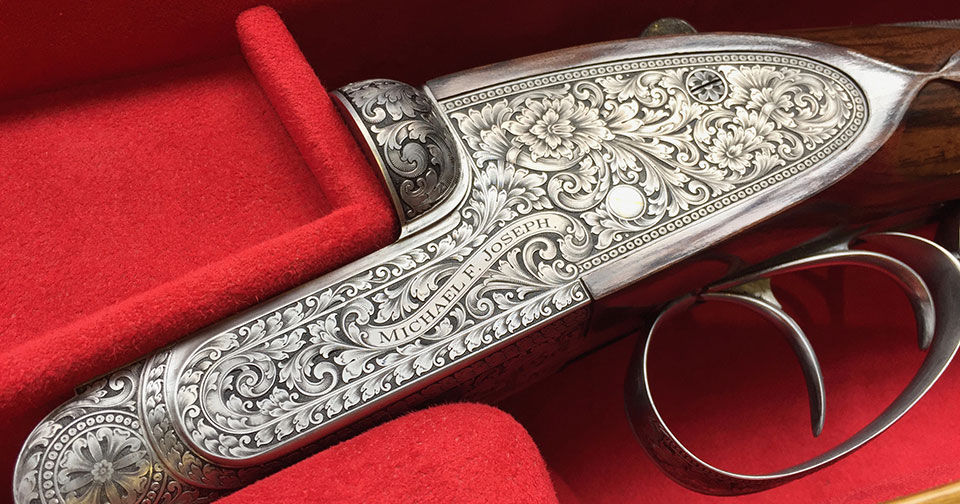
I built two Holland & Holland ‘Royal’ type shotguns for a customer, about three years ago. The cost, using the very best men in the London trade to carry out each part of the build created a gun that retailed for £50,000. We put the customer’s own name on it.
Published by Vintage Guns Ltd on (modified )




